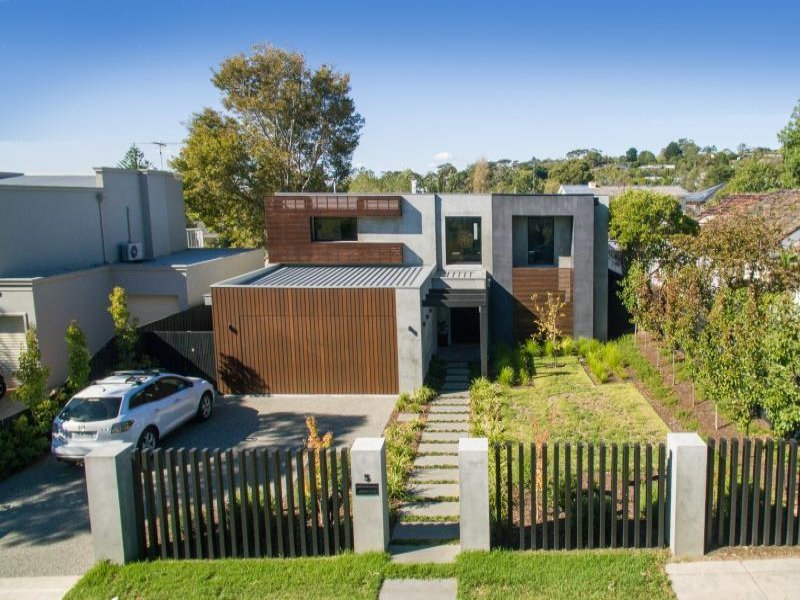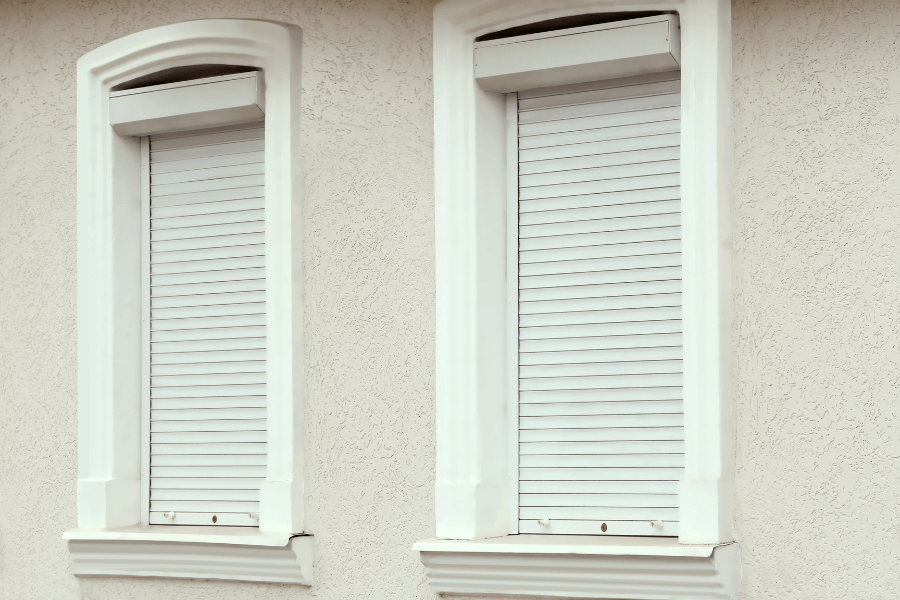Finding the right fence that complements all the best features of your home’s facade is the icing on the cake. Houses that flaunt stunning architectural curves need to have an aesthetically appropriate fence to go with it. Without one, the characteristics that make your home unique can get lost.
To determine which fencing style fits start by assessing the basics. Decide what purpose you want your fence to serve – privacy, security or kerb appeal, then study the appearance of your property to see what designs will boost its appearance best.
Matching the fencing with your home’s architecture is about showing a thoughtful marriage between the property, fence and landscaping. Whilst you want to consider functional needs and express your personality too, bringing the entire package together is essential. Here are the most popular architectural designs in Australian housing and how to go about matching up your fencing style to each.

1. Art Deco influence.
If your home has an Art Deco influence it’ll feature vivid decorative elements and flashes of wood, chrome and steel. Exteriors tend to be brick with geometric shapes, curved walls and porthole windows. Inside Art Deco homes you’ll notice wood panelling, timber floors and glass brick walls, ceiling moulds and stained glass features.
To really play on the best characteristics of Art Deco homes, wrought-iron gates and blocked-brick fencing can complement these homes beautifully. Consider steel and aluminium fencing for a more cost-effective alternative to wrought-iron that still boasts the same appeal. Fencing styles that utilise curved tops, Sentinel or Classique designs will add some architectural detail too.

2. Californian bungalow and craftsman style.
Think brick, weatherboard and timber exteriors with thick verandah balustrades, tiled gabled roofs and facades of exposed dark brickwork. A Californian style that became popular in Australia around the 1920s, bungalow and craftsman style homes feature timber floors, window frames and doors with contrasted dark and light colours.
Houses like these really thrive off panelled style fencing and cottage like gates. Keep it simple with slat and panel fencing and play on the warm appeal of timber. White picket fencing can be great for these homes too. Don’t forget to contrast the colours of the fencing and gates with your home’s colour palette.

3. Mid to late 20th century design.
These streamlined homes were big in the 1950s and 1960s, with still so many around Australia today. It was a style that seemed to experiment with a bit of everything; tapping into the open plan living advantages, functionality and a simple integration with its surroundings. The style emphasised creating structures that were open with ample windows to allow for natural light to flood in. Mid to late 20th century homes made it ‘trendy’ to bring outdoor elements inside too.
Homes with these architectural features experiment with new building materials, so you have freer reign here to install almost any fencing style. Picket fences will bring out the charm of mid to late 20th century homes, whilst steel and aluminium focus on its historic appeal. Utilising the timber look in your fencing and gates will help to integrate the indoor-outdoor feeling throughout the property too.

4. Sleek contemporary.
Traditional homes like the sleek appeal of contemporary can vary in designs and have a tendency to emphasise sustainable building materials and natural light. Often confused with modern homes, traditional contemporary homes prioritise using recycled non-toxic materials and are more dynamic. Natural finishes in these homes are often mixed with steel and concrete to give them an industrial-inspired look, but make sure it’s well-balanced. Homes in this style use designs that are in the moment, borrowing ideas from various styles to create something that is composed, yet edgy.
Contemporary homes are renowned for their open floor plan feel, so installing slat fencing can contribute in creating that feeling of airiness. The use of natural materials is a must – so opt for timber or other organic materials. Contemporary properties have stream-lined architectural features so you’ll want to stay away from anything that’s too heavy, like wrought-iron and steel. Consider fencing styles like traditional, Eastbourne, Nautical and Montana for extra detail.

5. Hamptons homes.
Lifting design features like white walls with accent colours of blue and beige, Hamptons styled-homes usually have white plantation shutters, panelling exteriors and fresh features. They originate from small fishing and farming villages and have a sense of class and elegance about them that coincides perfectly with leisure and relaxation.
These homes have a very grand feel about them, so you want to stick to a fencing style that’s fairly simple. White picket fences work their magic with Hamptons homes or curved-top aluminium fencing painted in crisp white will accentuate its features. Slat and panel fencing is ideal too, but go for soft beiges or white over timber.

6. Modern.
Modern and minimal homes are all about clean-lined architecture. Flat roofs and distinct angles are notorious to this style, with clean interiors that break away from traditional styles. Natural materials are an important part of these houses, utilising wood, stone, teak and leather to create warmth and texture to the space. White walls are big too – crisp, clean and fresh is the foundation of these home’s designs.
Find a fencing and gate style that embraces simplicity. Modern design reflects minimalist ideals and uses the absolute least to achieve the most. Attention is in the details, both architectural and artistic, so slat fencing works best with these homes. Bring out the warmth and texture of modern homes with the use of timber and create details with fencing styles like Valencia, Hastings and Montana.

For more on fencing design and construction find out how to show your fencing and gates some TLC and five ways to get the best fencing quote.







I like that you said that contemporary properties benefit from stream-lined features like Eastbourne fences. My brother is moving to a new home and is wanting to get a fence that fits the style of his modern home. I’ll be sure to share this with him so he can get more ideas of how to outfit his property.